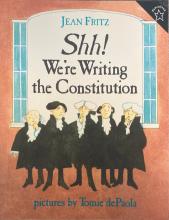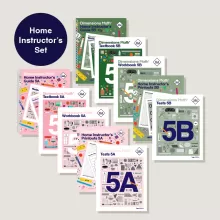No name
Sharks
Seymour Simon is well-known for his numerous photo-essay-type of picture books for elementary-aged students. Most of his books center around one specific well-defined topic and are illustrated with full-page photographs of the subject. This book is no exception. Sharks is an unpaginated, 32-page picture book, with approximately half of those pages containing full-color photographs of sharks.
The text begins by reassuring the young reader that shark attacks on humans are relatively uncommon and continues with a comparison between sharks and other types of fish. Several pages describe the characteristics of different kinds of sharks, leaving the reader with a sense of how varied these fish truly are. There are also two pages that describe the different types of shark reproduction; for my young non-readers, I skipped the paragraphs that described "external fertilization" and "internal fertilization". The book closes by reminding the children that sharks do not attack people very often, despite what they may have heard, and gives several suggestions for staying safe whilst swimming.
As usual for Seymour Simon's books, the photographs are of high quality and are truly the highlight of the book. Two of the photographs show the teeth and jaws of sharks up close, and my sensitive 5-year-old was horrified. Even so, my 3-year-old was fascinated. One photograph shows the birth of a lemon shark, which is born live as are human babies; my little readers didn't understand this and breezed right by it. The most popular picture of all was that of a hammerhead shark. The children were incredulous that any living creature could look so odd. Weeks later, they still talk about the hammerhead and are anxious to see one at an aquarium.
Shh! We're Writing the Constitution
A surprisingly in-depth account of the characters involved in the writing of the United States' Constitution and many of the fascinating details of life at that time, the struggles involved in such a monumental task, and the somewhat humorous attitudes and actions of our Founding Fathers. Approximately 4th grade reading level, but could be read aloud to younger children (and would be informative for older ones as well).
Show, Don't Tell!
Sidetracked Home Executives
Pam Young and Peggy Jones were the original "slob sisters" and "SHE"s (Sidetracked Home Executives). Their homes were disorganized, untidy, and definitely not conducive to peace and joy – until they found a way up and out of the chaos. To share their discovery with other SHEs, they wrote this now-classic book.
The book has two great strengths: Its authors write from their personal experience, which makes it easy for anyone else who is not "B.O." (Born Organized) to relate, and it is written with delightful humor. It is so engaging and motivating that, while reading it, you'll find yourself restraining an impulse to tidy a room or scrub a floor. Or maybe you shouldn't restrain yourself. In any event, the book will make you want what they have: a clean, organized, happy home.
To climb out of the chaos in their homes, Pam and Peggy realized that they needed a new set of habits. They devised a system of index cards, described in the book, with chores to be done daily, weekly, monthly, and semi-annually. They also describe index cards you can set up for your children, at ages 3, 5, 7, and 8, with suggestions for additional chores to add as they grow.
While nothing in this book is directed specifically at homeschoolers, there is nothing that couldn't work just as well in a homeschool family as any other. The ideas for children's file cards would be especially helpful in a homeschooling family.
This edition (2001) also suggests alternatives to the file card system. You could use your own PC to set up checklists, or, as the authors suggest on their website (www.shesintouch.com), you could turn to Marla Ciley at www.flylady.net for no-nonsense instruction in building new, more orderly habits. Marla read Pam and Peggy's book some years ago as she sought a way out of her chaos, then took their ideas (with permission) and ran with them on the web.
But no matter which system you think you might prefer, pick up this book if you are looking for an enjoyable and motivational introduction to the art of getting organized.
Signs and Mysteries
These symbols are, in one sense, quite ordinary; they are commonplace items from everyday life in the ancient world. And so we might take them for granted, overlook them. But they're there for a reason ... When we see these signs, how can we help sensing we have received an urgent message, telegraphic, cryptic, from a distant family member?If it would be an injustice to merely talk about the symbols without illustrating them, it would be an equal injustice to focus only on the visuals. Signs and Mysteries takes us on a pilgrimage of sorts, delivering those urgent messages from our ancient brothers and sisters in Christ, because, as the author tells us of these symbols:
The first Christians traced those lines because they wanted them to stand forever as a perpetual prayer, for remembrance of the dead, for the perseverance of the living, and for deliverance in times of trial.Exploring these ancient (but still relevant) symbols is far more than an archaeological exercise. Signs and Mysteries may be a fascinating read and a valuable reference, as well as a visual feast, but it is also about connections to our Christian family. It is a personal book in the best sense of the word -- a book that connects us, through a shared and vital language, to the person of Jesus Christ.
Silent Witness
This documentary video presents rather compelling evidence, from diverse fields of science, that the Shroud of Turin is the authentic burial cloth of Christ. Scientists and doctors also explain the sufferings of Jesus based on the evidence present on the cloth in conjunction with other historical data. Because some scenes from Christ's Passion are dramatized, the movie may prove too intense for very young, innocent children. It would be more suitable for older grade school and high school ages.
This movie has been around for quite awhile - I remember first seeing it in 4th or 5th grade when it was shown at our Church each year during Holy Week. I remember being quite impressed and fascinated with the details at that age. I recommend that parents preview the movie to determine suitability for their own children. It is excellent for Lent and Holy Week and a very moving film! Highly recommended.

Update from webmaster, March 2024: In 2017, Ignatius Press published The Shroud of Turin: New Expanded Edition, a collection of 4 films about the Shroud of Turin by British film producer David Rolfe. The Silent Witness, made in 1978, is the first. Also included are Shroud of Turin, made in 2008 for the BBC; Shroud, the Official Film of the 2010 Exposition of the Shroud in Turin; and A Grave Injustice, which investigates the flaws of the only carbon dating test to the done on the Shroud to date.
Total run time for the DVD is 200 minutes.
Silver for General Washington
Silver for General Washington is an engrossing story about twelve-year-old Gil and his sister, Jen, who are living in Valley Forge with their cousins during the occupation of Philadelphia. Before leaving their well-to-do home in Philadelphia, Gil helped his father bury all the family silver in a chest beneath the house. As the winter progresses and conditions grow worse for the poor soldiers, Gil overhears people saying that what's really needed is money to get food and other supplies. Knowing that it's what his father would want (his father is away on war business) Gil decides to sneak back into Philadelphia to recover the silver himself and offer it to General Washington. A nice story that brings to life the struggles and courage present in a critical and difficult time in our country's history that is all too often taken for granted.
Suitable for a family read-aloud or independent reading grades three and up.
Simply Grammar
A very simple and lovely grammar book based on the text First Grammar Lessons written by Charlotte Mason in 1928. The text is illustrated with charming 19th century drawings which are used within the text for exercises such as: completing sentences and making sentences of certain types and telling stories using certain parts of speech. The text is intended for fourth grade and up (the Charlotte Mason method recommends waiting until then for formal grammar studies - focusing on reading and narration earlier). It is simple enough to be used as a "lap-text" for the earlier grades as well (for mother and child to work on together in an informal manner). I found the explanations to be very good at helping children understand what the different parts of speech are used for.
Singapore Math
Singapore students are scoring the highest in the world in math and science. The web page for these texts in the US is http://www.singaporemath.com
Singapore Math seems to solve the "conceptual/drill...Saxon jumping around problem". Here's an example from a problem in the first half of the fifth grade book:
<< Mr Li paid $36 for 3 singlets and 2 T-shirts. A T-shirt cost 3 times as much as a singlet. How much did Mr Li pay for the 2 T-shirts? >>
Apparently the children are taught to "think mathematically" and are able to solve these types of problems in 5th grade without using algebra....these types of problems lead up to a better understanding of algebra.
Multiplication Asian style The children learn facts families in sets ....for example they chant as follows
2 2 4 2 3 6 2 4 8 2 5 10
They don't say "times" or "equal" although that is explained to them. They are taught the reciprical nature of multiplication and division after they can chant this from memory they write out the sets as-
2x2=4 2x3=6 and so on 4/2=2 3x2=6...... 6/2=3 6/3=2
and finally provide answers for equations....then they go on to memorize the next set which would be
2 6 12 2 7 14 2 8 16 2 9 18
If anyone is thinking about going with this program I would suggest making the move before going in to New Elementary Math. It would be easier to acclimate to this way of thinking while still in Primary Math I believe.
There are answers at the back the book but no other aid. To be honest I think I would have trouble teaching this material. I did "ok" in math but not great and I don't remember more then basic algebra. If you tend to think mathematically and enjoyed algebra, trig. you could probably use this without too much effort.
The Singapore texts actually do have almost as much drill as other books I've used (Miquon, Horizon) but not as much as Abeka. For example in 3rd A Singapore gives about 8-10 examples of adding 5 digit numbers then the workbook has at least that many that the child does on their own. The difference is that Horizon has the child doing a few of those problems every day for a week or two while at the same time they introduce new things. Singapore moves on after 2 lessons that cover that...but the child should have mastered that skill before they can move on to the next lesson. In Asia the kids spend a lot of time working on drills at home.
In Saxon you learn to add fractions then you repeat the same level of adding fractions for 6 or 8 lessons in the doing 3 or 4 problems in each practice section. During the intervening lessons you jump from learning short division to dividing with remainders to using metric scale etc before you finally get back to fractions again.
With Singapore you learn to add fractions and spend maybe 3 lessons learning how to do that (slight difficulty increase with each lesson) then you move on to using the skill of adding fractions with word problems (real life) for a few lessons. By this time the child has probably done more fraction addition problems overall then they would do in Saxon. The skill is learned and won't be touched again until the review chapters. If the child has trouble, the teacher/parent shouldn't move on. I did this a few times with my son and regret it. The review chapters occur often enough that the child shouldn't forget.









